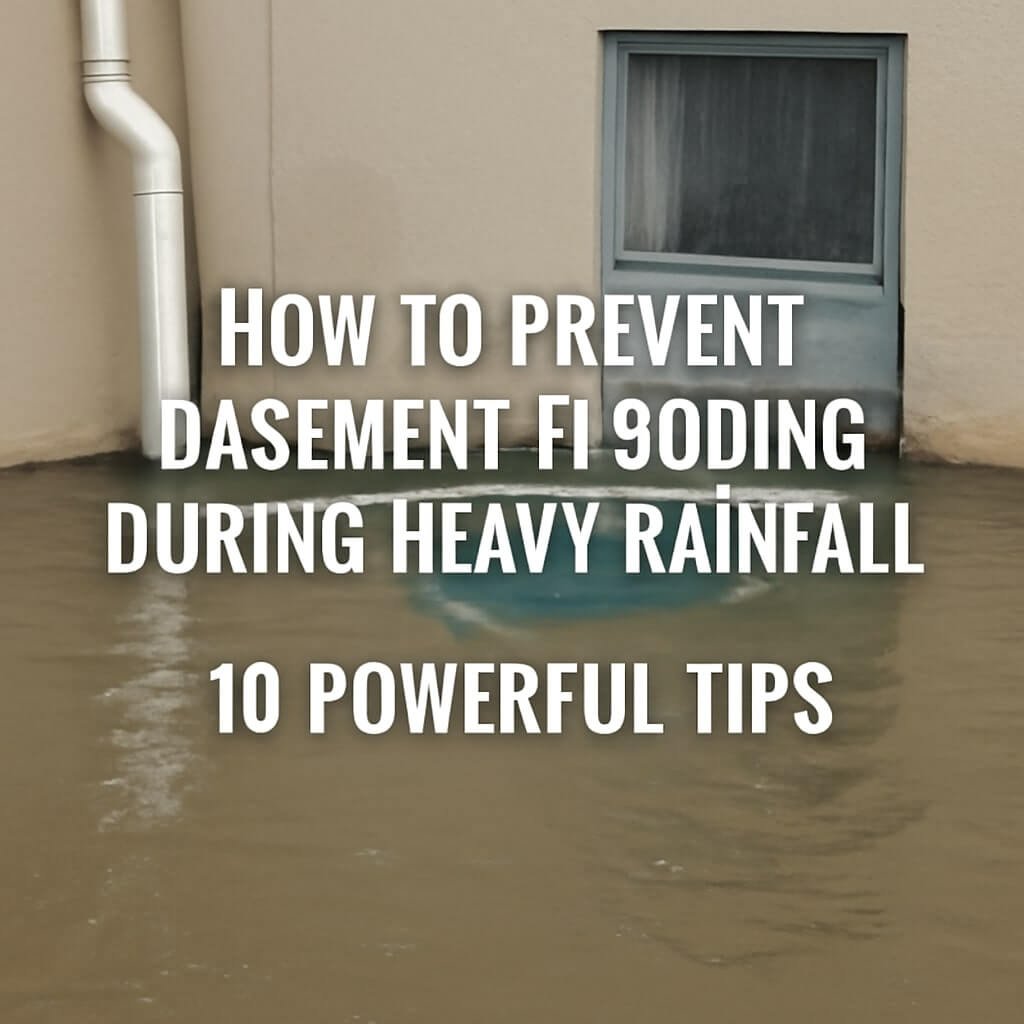If you’ve ever dealt with a wet basement, you know just how frustrating and damaging water intrusion can be. Basements, especially in areas with heavy rainfall or high water tables, are particularly vulnerable to moisture issues that can lead to mould growth, structural damage, and costly repairs. The good news? Waterproofing membranes are a powerful defence against these problems. In this article, we’ll dive into the best waterproofing membranes for extremely wet basements and guide you through choosing and installing the right solution for your home.
Basement waterproofing isn’t just about keeping your space dry—it’s about protecting your home’s foundation and maintaining a healthy living environment. With a variety of membranes available, selecting the right one can be overwhelming. We’ll break down the types, benefits, and best products on the market to help you make an informed decision.
Understanding Basement Moisture Problems

Before we discuss membranes, it’s crucial to understand why basements get wet in the first place.
Common Sources of Basement Water
Basements can experience moisture from several sources:
- Surface Water: Rainwater runoff that accumulates near your foundation.
- Groundwater: Water that seeps through soil and foundation walls.
- Plumbing Leaks: Broken or leaking pipes inside or near the basement.
- Condensation: Moisture from humidity that condenses on cool basement surfaces.
Each source requires specific attention in the waterproofing process.
Consequences of Poor Waterproofing
Ignoring basement moisture can lead to:
- Mould Growth: Harmful to both the structure and occupants’ health.
- Structural Damage: Water weakens concrete, wood, and other materials.
- Unpleasant Odors: Musty smells can permeate the entire home.
- Decreased Property Value: Persistent water issues deter buyers.
Understanding these risks highlights why investing in effective waterproofing membranes is so important.
What Are Waterproofing Membranes?
Waterproofing membranes act as barriers that prevent water from penetrating basement walls and floors. They come in two main types:
Liquid Applied Membranes
These are coatings that you apply directly to surfaces, forming a seamless, flexible barrier once cured. They conform well to complex shapes and cracks.
Sheet Membranes
Pre-formed sheets made from materials like rubber, polyethylene, or asphalt, these membranes are installed on surfaces and sealed at seams to create a waterproof layer.
Both types have their pros and cons, which we’ll explore further.
Top 10 Waterproofing Membranes for Wet Basements
Let’s take a closer look at the top membranes available for extremely wet basement environments:
1. Bentonite Clay Membranes
Bentonite is a natural clay that swells upon contact with water, sealing gaps and cracks. It’s highly effective for groundwater pressure and self-sealing properties.
2. Polyurethane Liquid Membranes
Known for their durability and elasticity, polyurethane coatings form a tough, waterproof layer that resists cracks and abrasions.
3. Rubberised Asphalt Membranes
These membranes combine asphalt with rubber to provide a flexible, waterproof barrier that adheres well to various substrates.
4. PVC Sheet Membranes
PVC sheets offer excellent chemical resistance and longevity, making them ideal for basements exposed to harsh conditions.
5. HDPE (High-Density Polyethylene) Membranes
HDPE membranes boast high strength and resistance to environmental factors, including chemicals and UV exposure.
6. EPDM Rubber Membranes
Ethylene Propylene Diene Monomer (EPDM) membranes provide superior elasticity and UV resistance, ideal for exterior applications.
7. Polyethylene Film Membranes
These are cost-effective and lightweight sheets, suitable for secondary waterproofing layers.
8. Cementitious Coatings
Easy to apply and highly adhesive, cementitious coatings are ideal for filling pores and small cracks on concrete surfaces.
9. Asphalt Membranes with Fabric Reinforcement
These combine asphalt with fabric layers for added tear resistance and durability.
10. Composite Membranes
Composite membranes use multiple materials layered together, offering enhanced protection tailored for demanding environments.
How to Choose the Right Membrane for Your Basement
Selecting the best membrane depends on:
Climate and Environmental Considerations
If your area experiences heavy rainfall or flooding, membranes with high water pressure resistance like bentonite or HDPE, are preferred.
Installation Requirements and Costs
Liquid membranes may require professional application, whereas some sheet membranes can be DIY-friendly. Cost varies widely—balance your budget with performance needs.
Installation Process for Waterproofing Membranes
Successful waterproofing hinges on proper installation:
Surface Preparation
Remove dirt, debris, and repair cracks before membrane application.
Application Techniques
Depending on the membrane type, this could mean spraying, rolling, or carefully laying sheets.
Curing and Inspection
Allow sufficient curing time and inspect for gaps or damage to ensure a watertight seal.
Maintenance Tips for Long-lasting Waterproofing
Regularly inspect your basement for signs of moisture, clean drainage systems, and repair membrane damage immediately to extend the lifespan.
Frequently Asked Questions (FAQs)
Can I install waterproofing membranes myself?
How long do waterproofing membranes last?
Are waterproofing membranes safe for indoor use?
What is the difference between damp-proofing and waterproofing?
Can waterproofing membranes prevent mould growth?
How much does basement waterproofing cost?
Conclusion
Choosing the best waterproofing membranes for extremely wet basements is vital to protect your home from moisture damage. From natural bentonite clay to advanced composite membranes, each option offers unique benefits depending on your basement’s needs and local environment. Proper installation and maintenance will ensure your basement stays dry and healthy for years to come.



